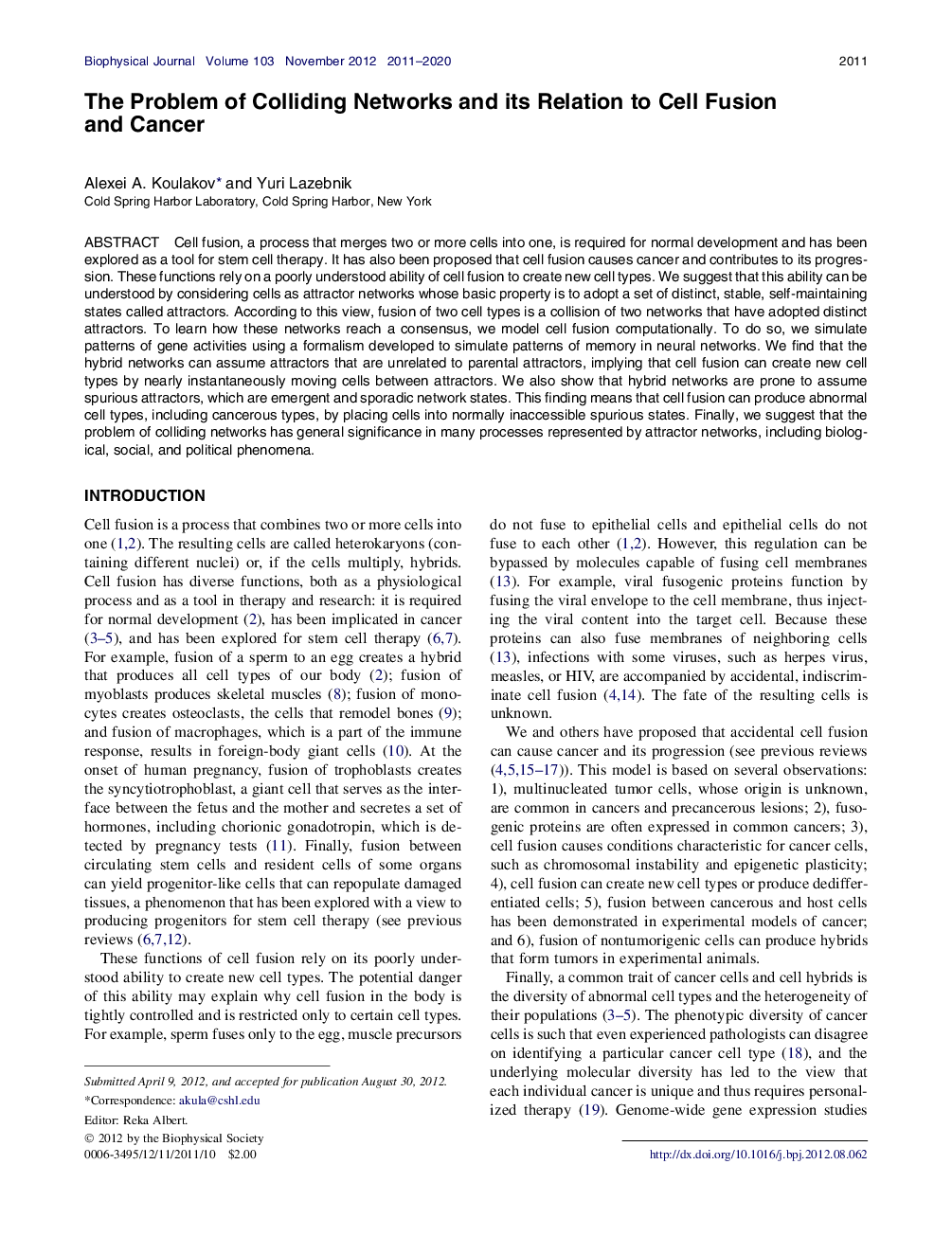| کد مقاله | کد نشریه | سال انتشار | مقاله انگلیسی | نسخه تمام متن |
|---|---|---|---|---|
| 1954253 | 1057766 | 2011 | 10 صفحه PDF | دانلود رایگان |

Cell fusion, a process that merges two or more cells into one, is required for normal development and has been explored as a tool for stem cell therapy. It has also been proposed that cell fusion causes cancer and contributes to its progression. These functions rely on a poorly understood ability of cell fusion to create new cell types. We suggest that this ability can be understood by considering cells as attractor networks whose basic property is to adopt a set of distinct, stable, self-maintaining states called attractors. According to this view, fusion of two cell types is a collision of two networks that have adopted distinct attractors. To learn how these networks reach a consensus, we model cell fusion computationally. To do so, we simulate patterns of gene activities using a formalism developed to simulate patterns of memory in neural networks. We find that the hybrid networks can assume attractors that are unrelated to parental attractors, implying that cell fusion can create new cell types by nearly instantaneously moving cells between attractors. We also show that hybrid networks are prone to assume spurious attractors, which are emergent and sporadic network states. This finding means that cell fusion can produce abnormal cell types, including cancerous types, by placing cells into normally inaccessible spurious states. Finally, we suggest that the problem of colliding networks has general significance in many processes represented by attractor networks, including biological, social, and political phenomena.
Journal: - Volume 103, Issue 9, 7 November 2012, Pages 2011–2020